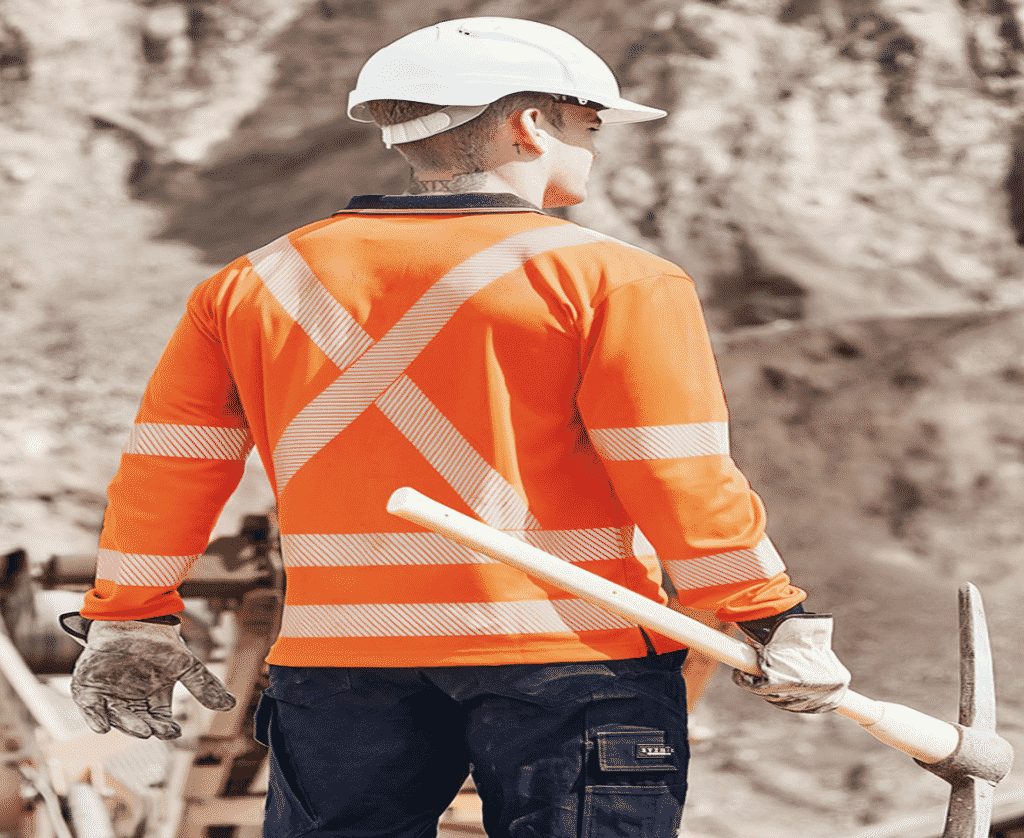Construction site managers are responsible for ensuring best practices are in place to keep their workers safe. These workers are handling dangerous situations when at work on site, including handling large machinery and performing heavy duty jobs. By following best practices, you can rest assured safety measures have been taken into consideration and implemented to protect people, assets and your reputation.
There are a number of ways to mitigate the many dangers associated with construction work such as equipping your workers with hi vis polo shirts, vests and jackets. If you’re serious about your construction site safety, check out this list of best practices to keep your workers safe.
5 Best Practices to Keep Your Construction Workers Safe on Site
1. The Right Gear and Equipment
Kitting out your construction workers in the correct gear is essential. But, having the right tools and equipment is also crucial for optimum safety when working under high risk conditions. They need items such as the following:
- High visibility clothing: High visibility standards in the building industry stipulate that all persons working under dangerous conditions need to be clearly visible. This is made possible by dressing them in high visibility reflective garments.
- Protective gear: Items such as goggles, helmets, gloves, non-slip footwear and earmuffs should be made available to all workers when on the building site.
- Tools and equipment: All machinery and tools should be in good working order. They should also be suited for the task being performed.
Your construction team will work better when they’re equipped with the right safety gear and well-maintained tools and equipment. It’s well-known that a well-managed workplace leads to higher productivity rates so make sure you’re doing everything you can to keep your workers happy AND safe. Both them and your company will benefit.
2. Risk Assessment and Employee Awareness
Before any job is done on a building site, a risk assessment should be carried out. This process informs all managers and supervisors of any potential hazards they should take note of. You can then implement risk management, such as putting up warning signs and only using workers equipped to work under such conditions.
Construction workers, in general, know their job is dangerous. However, it’s your responsibility as a manager or supervisor to ensure they’re fully informed of all risks associated with the work they’ll be performing on site. By giving them this information, your workers will have the knowledge they need to help prevent accidents from happening.
3. Training Workshops
You may have the best team of construction workers on your building site. But if they’re not kept up to date with the latest safety developments in the industry, you could run the risk of unnecessary accidents happening. Sending your employees to training workshops on a regular basis means your construction workers are well-informed about the latest safety measures.
If you have workers using any of the following while working on site, make sure they’re attending training sessions on how to use them safely:
- Fall arrest and protection systems
- Ladders
- Heavy machinery
Even the most experienced construction workers will benefit from attending training workshops. Keep an eye out for safety standards sessions being held in your industry and sign your team up to attend whenever possible.
4. The Right Paperwork
Having the right paperwork and documentation in place before starting any construction project is vital for a well-run site. This means you’re operating within the legal requirements stipulated by the government as well as being licensed and registered to start building work. Most countries have a code of practice for the construction industry and it’s your obligation to find out what it covers.
Having the right paperwork also means you can apply construction site safety within the professional guidelines. Certification is also required for particularly dangerous work such as blasting so make sure you’ve got all the right paperwork before proceeding with any construction work.
5. Proper Supervision
You’re off to a good start having the right gear, equipment, paperwork and sending your workers on training workshops. But, if you don’t have proper supervision in place, it’s too easy for the workers to get lazy about adhering to safety standards. Hiring a strict supervisor who’s diligent about following all the safety protocols means you can rest assured your construction site is being well-managed.
A strict and experienced supervisor will know the importance of the following:
- Keeping workers informed of potential hazards at any time while working on site.
- Communication of daily activities so all workers are fully informed on what to expect while on site.
- Enforcing the health and safety policy and ensuring all workers are suitably attired while on site.
- Proper maintenance of all tools and equipment.
Supervisors play a vital role in implementing best practices such as safety procedures on construction sites. Working under proper supervision gives your construction workers confidence their safety is a number one priority. And as mentioned, happy workers work better!
Final Thoughts
Construction site safety is vital and implementing best practices guarantees you’ve done everything you can to ensure your workers are safe. While it’s a given that construction work is a dangerous profession, applying safety standards helps to mitigate the risks associated with this industry.
Remember, ensuring your workers adhere to these standards is your responsibility.


